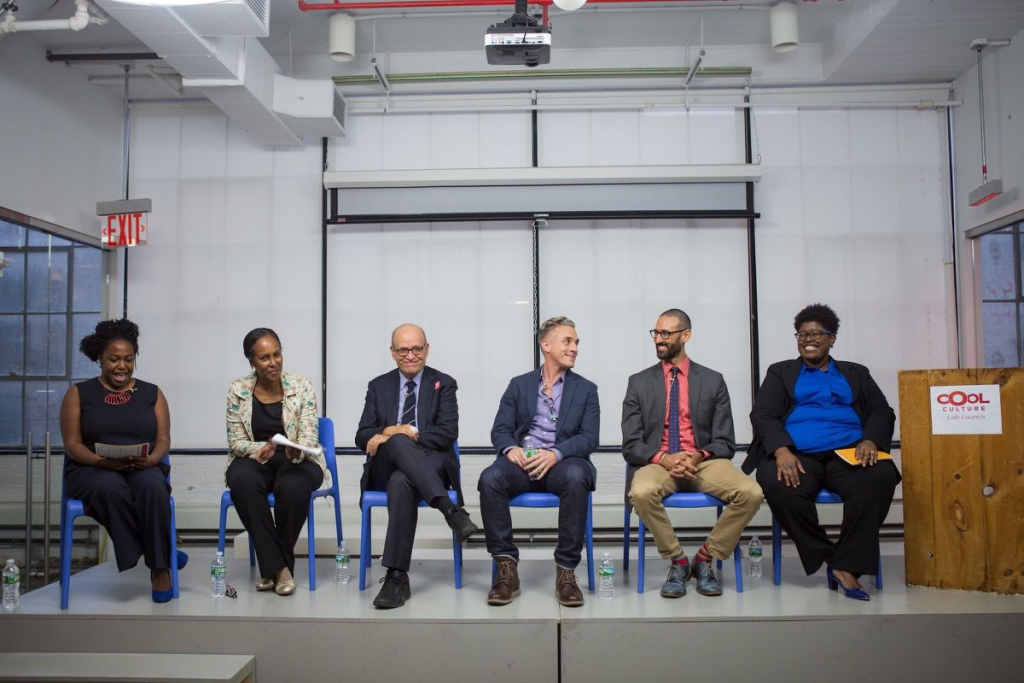Representation, Leadership, and Art World Diversity
The art world is not known for its diversity. Museums, galleries, and auction catalogs overwhelmingly feature white male artists. Boardrooms often lack equity as well. While art world diversity still lags behind, the industry is taking steps toward better representation.
One way to address this issue is to hire diversity specialists. Museums are increasingly recruiting Black and Latinx curators to address inequity. 2020 placed many museums under a critical lens, leading to modest changes in museum management. This could be a genuine attempt to improve art world diversity or an example of tokenism. Some newly-hired diversity officers point out the symbolic nature of their positions. “I’ve been doing this work for over 22 years, and I can honestly tell you that is literally always the question that I ask myself: ‘Is this performative or is this real?’” said Rosa Rodriguez-Williams in The New York Times.

Sandhya Jain-Patel, a diversity consultant and former head of Christie’s Indian, Himalayan, and Southeast Asian Art Department in New York, has spoken publicly about racial bias in the art world. “During my studies, while working, even now when interfacing with arts organizations, I am often the only person of color in the room,” she told Artnet. “I am not the first or only one to recognize this, nor the fact that women of any color rarely rise above a certain level in such organizations. And frankly, I’m over it.”
Business sectors in the art world typically face less scrutiny than museums. Some critics attribute this to the public-facing nature of cultural institutions. Many nonprofits receive public funds for their collections. In contrast, art fairs and auction houses exist squarely in the private sector. Artist and writer Debra Hand discussed these differences in Black Art In America: “[Art Basel] is an investment where the products on the shelves happen to reflect culture… The fact is, culture exists entirely on its own, even without the sale of art.” As a result, demands for greater diversity in art businesses are often less successful.
The largest auction houses are the most likely to publicly address issues of representation. Christie’s publicizes its corporate responsibility plans and regularly offers statements about improving art world diversity. Sotheby’s Institute of Art released similar statements following the death of George Floyd in the summer of 2020.
Auction houses interested in promoting diversity have some examples to follow. Bonhams intentionally elevated the work of African artists in recent years. It set several auction records in the process. Helene Love-Allotey, Bonhams’ Modern and Contemporary African Art specialist, spoke to Observer about the importance of catalog covers and promoted lots. By featuring the work of Black artists, auction house leaders can broaden collectors’ horizons.

Not every attempt to increase art world diversity is well-received. Last October, the Baltimore Museum of Art moved to sell several items at auction. The plan was to establish a fund for underrepresented artists. Due to widespread criticism, the museum halted the deaccessioning just hours before the auction started. The controversy prompted discussion about the best way to diversify, which continues today. Eventually, the BMA leadership did acquire pieces by Black artists in 2020. An untitled painting by Loïs Mailou Jones was among the notable purchases.
The issue of art world diversity remains relevant in 2021. Calls for accountability are growing louder as new leaders take charge. Time and public pressure will determine whether or not the art world can remedy its long history of exclusion.
Auction Daily is committed to addressing racial bias and discrimination in the art world. Our editorial team appreciates your feedback. Please contact us here.










